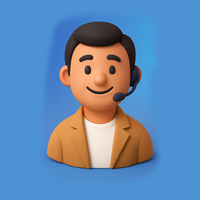
The Confession
I have a secret: I used AI to write a book chapter once.
Not the whole book—just a chapter. And it was terrible.
Not because AI is bad, but because I treated it like a magic wand instead of a tool. I fed it a prompt, hit “generate,” and expected a masterpiece. What I got was a word salad that sounded like it was written by a sleep-deprived philosophy major. It was technically correct, but it had no soul.
That’s when I realized something important: AI-assisted book publishing isn’t about replacing humans. It’s about enhancing what we do—if we use it right.
What AI Actually Does (And What It Can’t)
Let’s get real about AI-assisted book publishing. It’s not some sci-fi villain here to steal your job. It’s more like a really eager intern who’s great at research but still needs guidance.
Here’s what AI can do:
- Fix your grammar (better than your high school English teacher).
- Suggest plot twists (some good, some wildly off-base).
- Generate book cover ideas (but you’ll still need a designer to make it good).
- Analyze market trends (so you know what readers actually want).
Here’s what AI can’t do:
- Feel emotions (so it won’t cry at your sad scenes).
- Understand nuance (it might miss why your villain’s backstory matters).
- Have original thoughts (it remixes existing ideas—sometimes poorly).
- Care about your book (because it’s a machine, not a fan).
I once asked an AI to write a heartfelt dedication for my novel. It gave me: “To the readers who dare to dream.”
Not bad, but generic. A human would write: “To my mom, who read every terrible draft and still believed in me.”
See the difference?
The Time AI Saved My Deadline (And My Sanity)
Last year, I was drowning in edits for a client’s memoir. The deadline was looming, and I was stuck on a chapter about grief. I tried writing it myself, but the words felt flat.
So, I turned to AI. Not to write the whole thing, but to help me brainstorm. I asked: “Give me 10 metaphors for grief that aren’t cliché.”
Some were useless “Grief is a stormy ocean”—yawn. But one stood out: “Grief is a room you keep meaning to clean out, but every time you open the door, you find something new to cry over.”
That line sparked something. I rewrote it, added personal stories, and suddenly, the chapter worked.
That’s the power of ethical AI in publishing: It’s not about replacing your voice—it’s about helping you find it.
The Dark Side of AI (And How to Avoid It)
Not all AI stories have happy endings. Here’s what can go wrong:
1. The Plagiarism Trap
I once ran an AI-generated blog post through a plagiarism checker. Three sentences were copied verbatim from other sites. The AI hadn’t “stolen” them—it had stitched together phrases it found online. Always check AI content before publishing.
2. The “Uncanny Valley” Problem
AI writing can sound almost human… but not quite. It’s like a robot trying to tell a joke—the timing’s off.
Example:
- AI: “Her eyes were orbs of sadness, reflecting the pain of a thousand lost souls.”
- Human: “She stared at her coffee like it held the secrets of the universe—if the universe was sad and slightly lukewarm.”
One sounds like a bad fantasy novel. The other sounds like real life.
3. The Bias Issue
AI learns from existing data. If that data is biased, the AI will be too. I once asked an AI to describe a “strong leader.” It gave me 10 male examples before mentioning a woman. Always fact-check AI’s assumptions.
4. The Legal Gray Area
Who owns AI-generated content? The user? The AI company? Courts are still figuring this out. For now, assume you’re responsible for what you publish.
Need help ensuring your AI-assisted content is original and ethical? Fleck Publisher’s team can review and refine it.
How to Use AI Without Losing Your Soul
Rule 1: AI is a Starting Point, Not the Finish Line
Use AI to:
- Brainstorm titles (then pick the one that feels right).
- Draft outlines (but rearrange them to fit your story).
- Generate marketing copy (then add your brand’s personality).
Never publish raw AI content. Always edit, rewrite, and make it yours.
Rule 2: Keep the Human in the Loop
At Fleck Publisher, we use AI to:
- Speed up research (but we verify every fact).
- Suggest edits (but our editors have the final say).
- Create design mockups (but our designers refine them).
Our golden rule: If it doesn’t sound like a human wrote it, it’s not ready.
Rule 3: Be Transparent
If you used AI, say so. Readers appreciate honesty.
Example: “This book was written by a human, with a little help from AI for research and editing.”
Rule 4: Know When to Say No
Some things shouldn’t be AI-generated:
- Deeply personal stories (AI can’t capture your unique voice).
- Sensitive topics (like mental health or politics—AI lacks empathy).
- Anything requiring original thought (AI remixes; it doesn’t innovate).
The Future of AI in Publishing: Exciting or Terrifying?
Here’s what’s coming:
AI co-writing tools that feel like a collaborator, not a replacement.
Hyper-personalized books (imagine a novel that adapts to your life).
Better audiobook narration (but human voices will still reign for emotion).
But here’s what won’t change:
- Readers crave authenticity.
- Stories need heart.
- Publishing is still a human industry.
The Bottom Line: AI is Your Assistant, Not Your Boss
AI-assisted book publishing is here to stay. But ethical AI in publishing means:
- Using it as a tool, not a crutch.
- Keeping humans in control of creativity and ethics.
- Always adding your unique voice (because no one else can tell your story).
Final Thought:
AI can help you write faster, but it can’t make you write better. That part’s still up to you.
The best AI content doesn’t sound like AI-generated content. It sounds like you, just with fewer typos and more time to focus on what matters. Now go write something brilliant. (And if you get stuck, we’re here to help.)

